Last week two magnificent exhibitions opened in London. Both have as their theme the idea of the Silk Road, an-overland trade route said to stretch ever since antiquity all the way across Asia from China to Turkey and hence to Mediterranean Europe.
The show at the British Library is entitled A Silk Road Oasis: Life in Ancient Dunhuang and focuses on the extraordinary haul of ancient documents found in the Mogao Buddhist cave temples by a Chinese Daoist priest and sold by him to the explorer and archaeologist Aurel Stein in 1907.
Its treasures include the celebrated ninth-century Diamond Sutra, the earliest clearly dated and complete printed book in the world, as well as the Dunhuang star chart, the earliest known atlas of the night sky from any civilization. The show is imaginatively mounted, with some of the documents read out in wonderful audio clips. There are not many places in the world today where you can hear ancient Sogdian love poetry read out in the original, but the British Library has risen to the challenge.
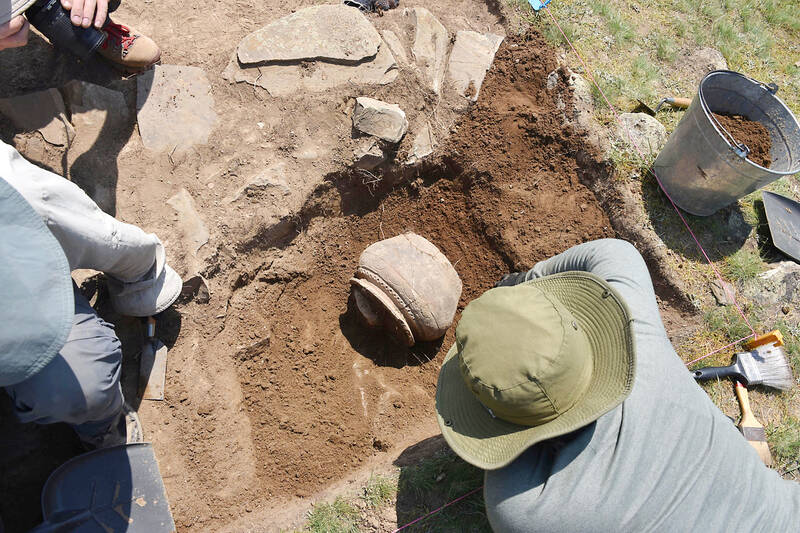
Photo: Reuters
The British Museum’s Silk Roads show is even more spectacular, unquestionably the most fabulous array of treasures to be seen in London in recent times. It guides us all the way from Japan and Korea to East Anglia and even Rhynie in Aberdeenshire, dazzling us with rare treasures of gold, jade, Chinese silk and exquisitely carved ivories gathered from collections around the world.
On the way we see miniature wooden pagodas, stunning ceramic figurines of musicians and camels and grooms, engraved gold cups rescued from shipwrecks and gorgeous fragments of Buddhist wall paintings. The exhibition has rightly received glowing reviews.
‘DIE SEIDENSTRASSEN’

Photo: Bloomberg
Both exhibitions promote the idea of the Silk Road as an east-west network of superhighways linking eastern Asia with western Europe in a free-flowing movement of goods and ideas. It is a deeply romantic idea, evoking camel caravans crossing the Pamir mountains, then swaying their way over the sand dunes of the Gobi desert.
It is also an idea that breaks open nationalistic silos and encourages us to think about the surprising interconnectedness of the world in a period millennia before we expect to encounter globalization. But for all that, the seductively Sinocentric concept of the Silk Roads is still problematic.
Despite its modern popularity the notion of a Silk Road was unknown before the 19th century. Marco Polo, the man now most closely associated with the road, never once mentions the term, even though it was during his lifetime that travel became easiest through the borderless Mongol empire.
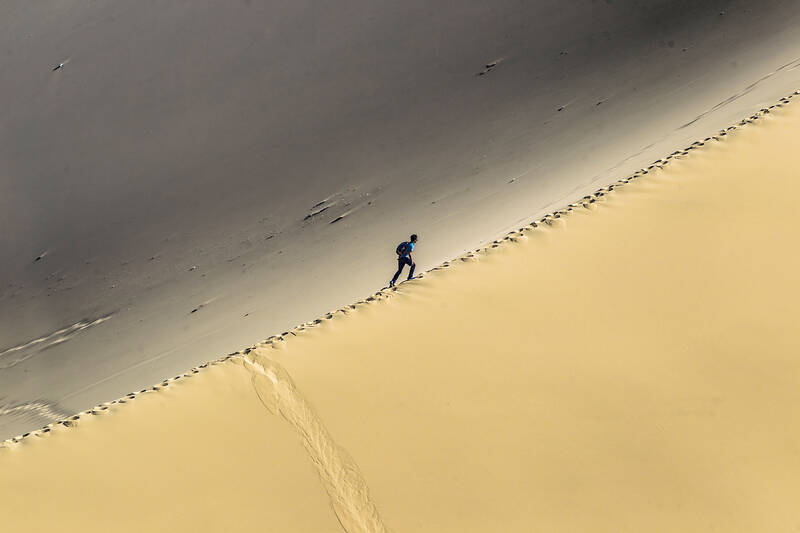
Photo: EPA-EFE
Instead the term was popularized by a Prussian geographer, Baron von Richthofen, as late as 1877. While engaged in a survey of China, the baron was charged with dreaming up a route for a railway linking Berlin to Beijing. This he named die Seidenstrassen, the Silk Roads. It was not until 1938 that the term Silk Road appeared in English, as the title of a popular book by a Nazi-sympathizing Swedish explorer, Sven Hedin.
Since then, the term has captured the global imagination, and the “reopening” of the Silk Road has been announced by President Xi Jinping (習近平) of China as part of his belt and road initiative. In this way, the idea has been mobilized as part of Chinese foreign policy, partly to obfuscate its economic and military projections of power.
TRADE
Yet silk was never the main commodity imported to the west from the east. Instead, it was always far exceeded in value by imports of Indian pepper, spices, ivory, cotton, gems, teak and sandalwood. When in 408AD Alaric the Visigoth held Rome to ransom, his terms were significant: in addition to 5,000 pounds of gold, he demanded not silk but 3,000 pounds of Indian black pepper.
Nor was China, the alleged terminus of the Silk Roads in most versions of its conception, ever the main destination of east-west trade in ancient or early medieval times. Indeed, the Roman empire and China actually had only the haziest notions of each other’s existence — vaguely aware of each other, but almost never in direct contact.
In reality, goods from China largely reached Rome merely as an exotic supplement to its thriving commerce with India, and passed through Indian ports: the fullest early guide to the commerce of Asia, a first-century merchants’ manual, specifically says the best place to buy silk are the ports of Gujarat, where much of the silk that reached the west was manufactured.
It is also clear that sea travel was the fastest, most economical and safest way to move people and goods in the pre-modern world, costing about a fifth of the price of equivalent land transport. Shipping routes that cut across political and topographical boundaries were always more important than the slow-moving caravan trails, and the overland trade routes always carried much less trade than the sea roads: ships, after all, could carry vastly larger cargoes — often amounting to several hundred tonnes — and travel much more quickly than donkeys or camels. They could also sail around wars, instability and ambushes.
Western trading manuals reveal a real, practical familiarity, even intimacy, with the ports of India, especially those on the west coast, with detailed descriptions that clearly derive from first-hand experience and direct observation, the author commenting, for example, on the taste for singing boys in Gujarat. If China and the west ever came face to face, they did so here in the quays, ports and bazaars of coastal India.
INDOSPHERE: A CULTURAL CENTER
Indeed in the crucial period between the end of antiquity and the high middle ages, you can make at least as good a case for India being the cultural and intellectual center of Asia, influencing and changing the course of religious, artistic and cultural life in the regions around it, not least China itself.
In this period, India was the center of the Buddhist world and the main destination of Buddhist pilgrims seeking their holy places. This was why, for example, the celebrated seventh-century Chinese monk Xuanzang (玄奘), and many others like him, risked their lives to make the dangerous journey to what was then the Oxford of ancient Asia: the great Buddhist university of Nalanda in the middle of north India’s Gangetic plain, with its tens of thousands of learned monks. Its magnificent library was the greatest repository of Buddhist texts; works revered, copied and carried eastwards by generations of Chinese, Korean and Japanese monks.
“People of distant places, with diverse customs,” wrote Xuanzang, “generally designate the land they most admire as India.”
The account he wrote of that journey, The Great Tang Records on the Western Regions, makes it clear that the world he had just passed through, from Changan in western China to Kanchipuram in southern India, and back, was largely dominated by Indic ideas, art, science, languages and religions.
During the period covered by these shows, India was a confident exporter of its own diverse civilization, creating around it an empire of ideas that developed into a tangible “Indosphere” where its cultural influence was predominant. During this period, the rest of Asia was the willing and even eager recipient of a startlingly comprehensive mass transfer of Indian soft power, in religion, art, music, dance, textiles, technology, astronomy, mathematics, medicine, mythology, language and literature.
SANSKRIT, LINGUA FRANCA
Sanskrit became the lingua franca in much of Asia and left a permanent mark on the map from Balkh to Singapore. Indeed, so deeply immersed in Sanskritic culture did the elites of south-east Asia become that they began renaming towns and settlements after the most celebrated places of Indian mythology. To this day, the ancient capital of Thailand is named Ayutthaya after Ayodhya, Lord Rama’s capital in the great epic poem the Ramayana, while the national airline of Indonesia is Garuda, named after the god Vishnu’s mount. The spread of Sanskrit brought all of Indian literature, arts and sciences in its wake.
Yet in the catalog of the British Library show, the map highlights the network of roads running east to west through the deserts of western China, but leaves the lands south of the Himalayas in routeless, cityless darkness inscribed merely “Indian Kingdoms.”
Equally, although the British Museum show opens with a Gandharan Buddha smelted in the Swat valley of what is now Pakistan and brought to Sweden by Vikings, and ends with a scattering of Rajasthani garnets found in the Sutton Hoo ship burial in Suffolk, India is still oddly absent from the exhibition, appearing only glancingly in displays focusing on other regions, and completely ignored as a major center of trade and ideas in its own right. I longed for more.
British institutions have a painfully long tradition of minimizing the importance and influence of India and its extraordinary civilization ever since Macaulay declared that “a single shelf of a good European library was worth the whole native literature of India and Arabia.” We may laugh at Macaulay today, but the odd India-shaped hole in these otherwise wonderful Silk Roads shows suggests that the tendency to underrate India and its civilization persists.
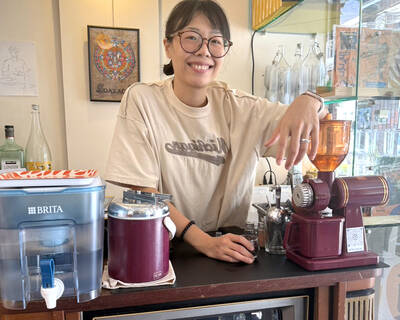
Cheng Ching-hsiang (鄭青祥) turned a small triangle of concrete jammed between two old shops into a cool little bar called 9dimension. In front of the shop, a steampunk-like structure was welded by himself to serve as a booth where he prepares cocktails. “Yancheng used to be just old people,” he says, “but now young people are coming and creating the New Yancheng.” Around the corner, Yu Hsiu-jao (饒毓琇), opened Tiny Cafe. True to its name, it is the size of a cupboard and serves cold-brewed coffee. “Small shops are so special and have personality,” she says, “people come to Yancheng to find such treasures.” She
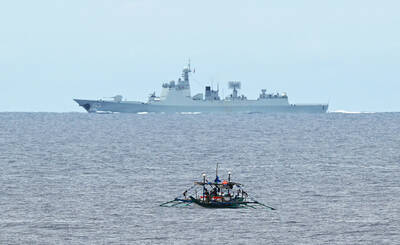
Late last month Philippines Foreign Affairs Secretary Theresa Lazaro told the Philippine Senate that the nation has sufficient funds to evacuate the nearly 170,000 Filipino residents in Taiwan, 84 percent of whom are migrant workers, in the event of war. Agencies have been exploring evacuation scenarios since early this year, she said. She also observed that since the Philippines has only limited ships, the government is consulting security agencies for alternatives. Filipinos are a distant third in overall migrant worker population. Indonesia has over 248,000 workers, followed by roughly 240,000 Vietnamese. It should be noted that there are another 170,000
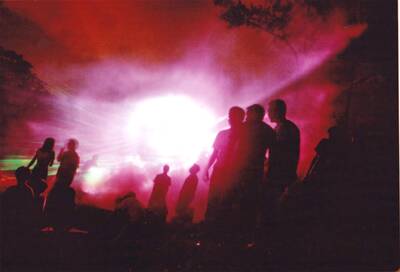
In July of 1995, a group of local DJs began posting an event flyer around Taipei. It was cheaply photocopied and nearly all in English, with a hand-drawn map on the back and, on the front, a big red hand print alongside one prominent line of text, “Finally… THE PARTY.” The map led to a remote floodplain in Taipei County (now New Taipei City) just across the Tamsui River from Taipei. The organizers got permission from no one. They just drove up in a blue Taiwanese pickup truck, set up a generator, two speakers, two turntables and a mixer. They
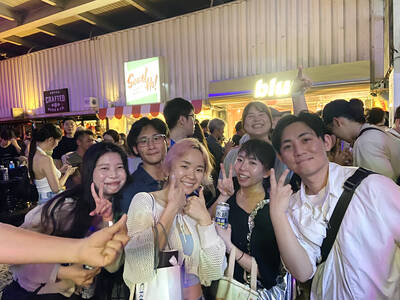
Hannah Liao (廖宸萱) recalls the harassment she experienced on dating apps, an experience that left her frightened and disgusted. “I’ve tried some voice-based dating apps,” the 30-year-old says. “Right away, some guys would say things like, ‘Wanna talk dirty?’ or ‘Wanna suck my d**k?’” she says. Liao’s story is not unique. Ministry of Health and Welfare statistics show a more than 50 percent rise in sexual assault cases related to online encounters over the past five years. In 2023 alone, women comprised 7,698 of the 9,413 reported victims. Faced with a dating landscape that can feel more predatory than promising, many in